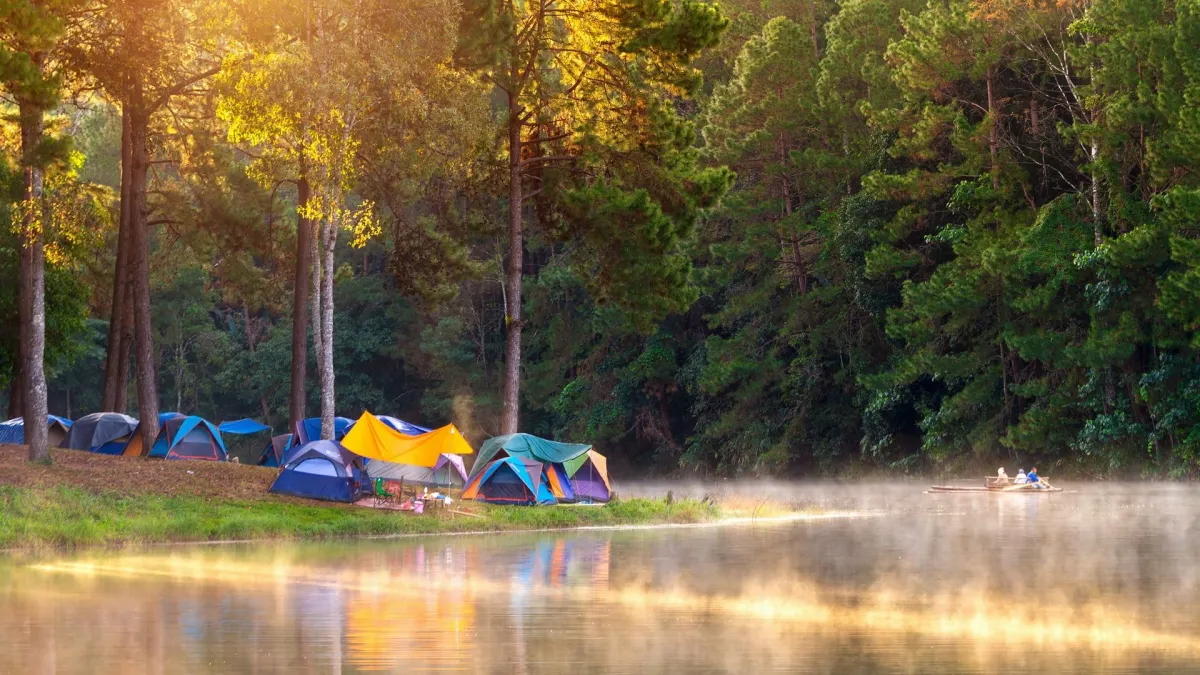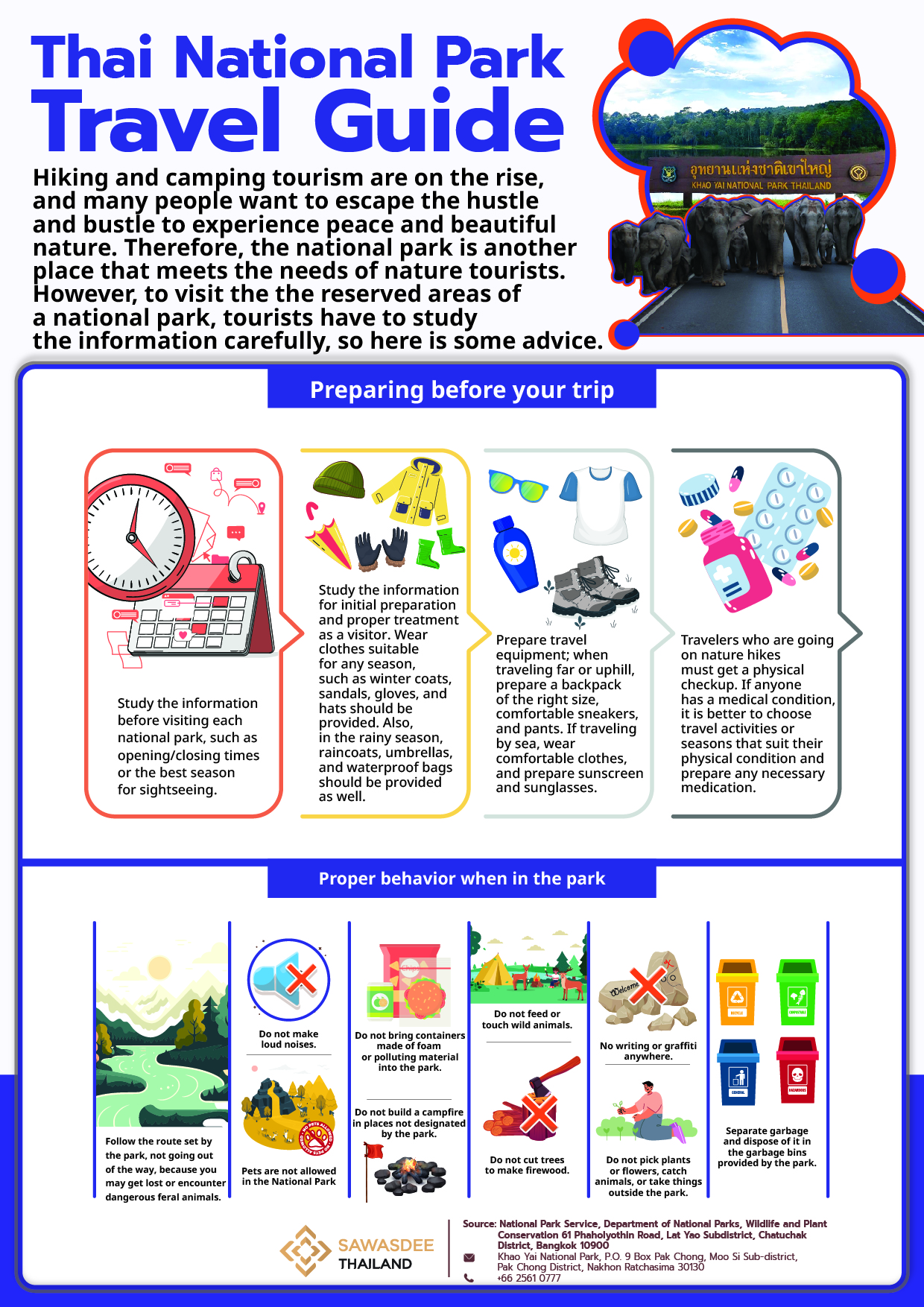
Thai National Park Travel Guide
Hiking and camping tourism are on the rise, and many people want to escape the hustle and bustle to experience peace and the beauty of nature. Therefore, national parks are an excellent place that meets the needs of nature tourists. However, before visiting the national parks, tourists have to study the information carefully, so this article offers some advice.
Preparing before your trip
Proper behavior upon arrival at the park
What to do when encountering a wild elephant
When visiting many Thai national parks, visitors may encounter large wildlife, such as Khao Yai National Park, where wild elephants can be seen up close, especially along or even on the road. Since many of the roads were built across the “livelihood path” of wild elephants – also known as the "elephant outpost" – some parts of the road have to be shared between elephants and cars.
For the safety of wild elephants and visitors to Khao Yai National Park, we encourage you to follow the following instructions strictly.
Observing the mood of the elephant
Elephant in a good mood: The ears will flick back and forth, the tail will swing, and it uses the trunk to flick back and forth or pull fruit from the tree to eat. Usually, the elephant will run after someone disturbing it for a short distance, only two or three times. If it cannot run after the disturber, it will stop chasing and not hurt them, even if the car comes close;
Elephant in a bad mood: The ears will spread, not flick, the trunk will be stiff and still, and it will stare before it rushes into a charge. If the elephant, especially a young mother, is angry or distrustful of anything, it may directly attack the intruder, even from a distance.
What to do when facing a wild elephant on the road
Stop the car at least 30 meters away from the elephant. If the elephant walks towards you, carefully back the car away; wait until the elephant leaves the road, and then move past it.
Do not honk the horn or make noises that will annoy it, and never chase elephants, because it can make them angry, and they’ll come straight at you.
Refrain from using flash with a camera, because it may startle the elephant and hurt its eyes.
Always keep the car’s engine running, so that the car can be moved promptly, and the loud sound of starting the engine will not startle the elephant. The elephant will not be stressed and will get used to hearing the sound and know that this is a car, not a monster.
If you see an elephant at night, keep the lights on so that you can observe the elephant's movements, and keep a safe distance between the car and the elephant. However, do not turn on blinking or flashing lights, because it will attract the attention of the elephant.
When approaching a group of elephants, stay focused. If it is night, use low lights and do not flash them. As with a single elephant, back away and wait for them to move off the road. If it is necessary to go forward, drive slowly in the direction where there are the fewest elephants. Do not turn off the engine or the car lights. Keep the engine sound smooth and steady.
Do not park to watch elephants, because too many cars may cause obstacles and harm.
Don't park your car and go into the jungle to take photos of elephants. You might be in danger. Also, remember that elephants generally live together as a family or as a group, so you’ll be facing several of them, possibly with young ones, on your own.
One of the important things to remember when cars are parked in tandem on the road is that harmony must be preserved. Whether the car is near the elephant or far away, the elephant is the innocent party, the potential victim. Therefore, if the car in front of you decides to play it safe and retreat, you should follow suit and likewise back off.
Inquiries about booking in advance
If you want to stay overnight at a national park, you should book your accommodation in advance, whether you plan to stay in a hotel or in a tent; book in person via the website www.dnp.go.th or phone the park.
Source: National Park Service, Department of National Parks, Wildlife and Plant Conservation, 61 Phaholyothin Road, Lat Yao Subdistrict, Chatuchak District, Bangkok 10900 Tel. +66 2561 0777
Khao Yai National Park, P.O. 9 Box Pak Chong, Moo Si Sub-district, Pak Chong District, Nakhon Ratchasima 30130 Tel. +66 8 6092 6509
For more information 1
For more information 2

